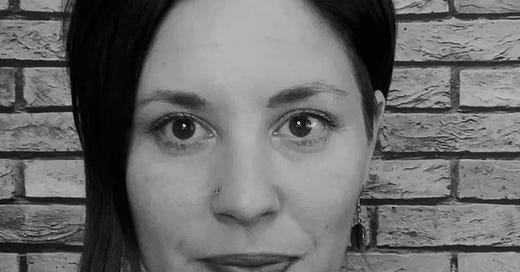I have learned so much about abusive love in the last year and a half. When I hit my rock bottom in August of 2021, I hadn’t really heard of trauma bonding. It wasn’t until I was listening to a book on Audible one day while doing dishes in my kitchen that I heard the specifics of what it meant. As I listened to Danu Morrigan, author of You’re Not Crazy - It’s Your Mother describe the four main characteristics of a trauma bond, I was shocked to learn that it was something I had experienced.
I was never hit, aggressively yelled at or called names in my childhood and yet I had been emotionally and psychologically abused but the only symptoms were internal. I had no bruises or broken bones to point to and scream, "this is abuse." Emotional neglect isn't something that leaves scars or bruises. Instead it leaves you with a giant void within filled with toxic shame - blaming yourself for being unlovable when you were never the problem to begin with.
As I stood in my kitchen listening to Danu Morrigan describe trauma bonding while scrubbing a pan with a soapy sponge, suddenly my symptoms began to make more sense.
If you grew up with an abusive, emotionally immature or narcissistic parent - you likely have or had a trauma bond with that parent. We can have a trauma bond with anyone who is abusive AND that we also care about. You can have a trauma bond with a parent, extended family members, an abusive boss or a coworker.
Four Signs of Trauma Bonding
1. The victim must feel danger to their survival:
A child or adult living in an unsafe environment, either physically or emotionally learns to deny their needs in order to survive the pain that they are experiencing. They realize they cannot survive on their own so they will adapt and mold themselves into whatever they need to become to survive the toxic environment in their home.
2. The victim is cut off from outside perspectives:
I once heard this quote: “isolation is the greatest form of control” and it hits this point square on the head! Abusive parents or partners isolate their victims from other family members, friends and outside perspectives so that the ONLY narrative the victim has is the abusers. The abusive person doesn’t want anyone to question them or reflect to the victim the abuse that is occurring.
3. The victim must have a real or perceived inability to escape from the situation:
Growing up in an abusive environment or living in one as an adult can certainly make you feel trapped. Financial insecurity, the inability to live on your own at a young age, having your own children with an abusive partner, familiarity to abusive love - all of these are factors that keep us stuck in a situation where we find it difficult or impossible to leave.
4. ***The abuser must give occasional kindnesses to the victim:
This is the kicker!!! This is the sickest part of the process but also plays into The Narcissistic Abuse Cycle which I wrote about a few weeks ago. In situations where children have been kidnapped and held hostage, the abusers will occasionally give them special treats like toys, candy or nice clothes. Similarly, in adult relationships the abusive partner may offer occasional gifts, a night on the town or buy expensive jewelry for the victim.
This process erodes a person’s ability to decipher the difference between abuse and love therefore solidifying these two as the same entity. This is the reason why we seek toxic relationships as adults when we have been abused as children.
Examples of Trauma Bonding:
Feeling bad about the trauma your narcissistic parent or partner has endured and then making excuses for them when they mistreat you.
Blaming yourself for or justifying the abuse.
Believing you can change the abusers behavior by loving or fixing them.
Feeling protective of your abusive parent or partner.
Disregarding your feelings and needs to please your parent or partner.
Feeling like you are coming off of a drug if you break up with your abusive partner or go no contact with your abusive parent.
Minimize the abuse and magnify the “good times.”
How to Break the Cycle:
Step 1: Educate Yourself
Study and research trauma bonding to better understand what has happened so you don’t continue to repeat patterns of abusive love in your future relationships. You can check out this article to learn more!
Step 2: Understand What Unconditional Love Is
When we’ve been abused, we don’t know anything different than mistreatment. Get into therapy, read books, join support groups to help you peel apart abusive behavior from unconditional love.
Step 3: Watch for Red Flags
Pay attention to any relationship that erodes your sense of reality, your confidence or that tries to isolate you from others. Get feedback from trustworthy friends and family about a situation that feels off.
Your Biggest Fan,










Share this post